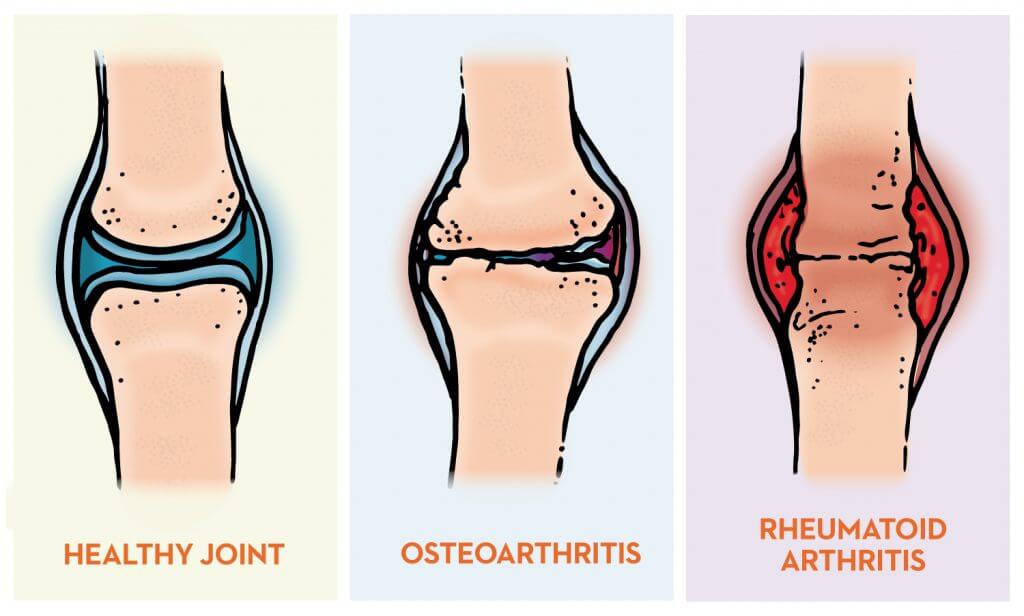
What is Arthritis: Symptoms, Causes, and Treatment
Table of Contents
If you suffer from chronic joint pain and stiffness, you may be one of the millions of people around the world living with arthritis. But what exactly is arthritis, and how does it affect the body?
Arthritis is a chronic condition that affects the joints and causes inflammation, pain, and stiffness.
There are more than 100 different forms of arthritis, including osteoarthritis, rheumatoid arthritis, and gout.
Arthritis can affect people of all ages, including both men and women, and it is a leading cause of disability worldwide.
The consequences of arthritis can be significant, both physically and emotionally. It can be difficult to perform everyday activities such as walking, dressing, and cooking, and it can also have a negative impact on your overall quality of life.
In addition, the costs of managing arthritis, including medications and medical appointments, can add up quickly.
In this blog post, I will delve deeper into the topic of arthritis, including its symptoms, causes, diagnosis, and treatment.
I will also provide tips and strategies for coping with the condition and maintaining a good quality of life. If you are experiencing symptoms of arthritis, it is important to seek medical advice to determine the best course of treatment for you.
Types of Arthritis

There are many different types of arthritis that can cause joint pain, stiffness, and inflammation.
Understanding the different types of arthritis and their characteristics can help you better manage your condition. Always work with your healthcare provider to find the most effective treatment.
There are several common forms of arthritis, including osteoarthritis, rheumatoid arthritis, and gout.
- Osteoarthritis: this is also known as degenerative joint disease and it is the most common form of arthritis. It occurs when the cartilage that cushions the bones in your joints wears down over time, causing pain and stiffness. Osteoarthritis is more common in older adults and people who have a history of joint injury or overuse.
- Rheumatoid arthritis: this is caused by an autoimmune disorder that causes inflammation in the joints and It can also affect other parts of the body. Rheumatoid arthritis is more common in women and typically develops in people between the ages of 30 and 60.
- Gout: A gout is a form of arthritis that is caused by high levels of uric acid in the body. It can cause sudden, severe attacks of pain and swell in the joints, especially in the big toe. Gout is more common in men and tends to develop in people who are overweight or have high blood pressure.
These are just a few examples of the many different types of arthritis that exist. Other examples include psoriatic arthritis, septic arthritis, and lupus.
Each type of arthritis has its own characteristics and treatment options, so it is important to work with your healthcare provider to determine the specific type of arthritis you have and the most appropriate treatment plan.
Also read: Liver Failure: Symptoms, Causes, and Treatment
Symptoms of Arthritis
If you have been diagnosed with arthritis, you are likely familiar with the pain and stiffness that are common symptoms of this chronic condition.
But what other signs should you be aware of, and how can you manage your symptoms?
Pain in the joints
Pain in the joints either mild or severe is a very common symptom that is associated with arthritis.
It may be accompanied by stiffness, especially in the morning or after periods of inactivity. Swelling in the joints can also occur, as well as redness and warmth to the touch.
Fatigue
Fatigue is another common symptom of arthritis, and it can be caused by the inflammation and pain associated with the condition. Difficulty with daily activities such as dressing, bathing, and preparing meals can also occur.
In addition to joint-related symptoms, some types of arthritis can also cause general symptoms such as fever, weight loss, and anemia.
It is important to discuss any symptoms you are experiencing with your doctor to determine the cause and the best treatment for you.
There are many ways to manage the symptoms of arthritis and maintain a good quality of life. These can include medications, lifestyle changes such as exercise, weight management, and physical therapy.
Also read: 10 Ways to Improve Your Life With Garlic
Causes of Arthritis
Arthritis is a chronic condition that affects the joints and causes inflammation, pain, and stiffness.
While the specific cause of arthritis can vary depending on the type of arthritis you have, there are several factors that can increase your risk of developing the condition.
Genetics
One factor that can contribute to the development of arthritis is genetics. Some forms of arthritis, such as rheumatoid arthritis, have a strong genetic component, meaning that if a family member has the condition, you may be more likely to develop it as well.
However, genetics is not the only factor at play, and even if you have a family history of arthritis, it does not mean that you will definitely develop the condition.
Injury
Injury or overuse of the joints can also increase the risk of developing arthritis. For example, people who have suffered a joint injury or who engage in high-impact activities such as running may be more prone to developing osteoarthritis later in life.
Other factors that can increase the risk of developing arthritis include obesity, infection, and autoimmune disorders.
It is important to be aware of these risk factors and try to manage them so as to reduce your risk of developing arthritis.
Diagnosis of Arthritis

If you are experiencing symptoms of arthritis such as joint pain, stiffness, and swelling, see a healthcare professional for a proper diagnosis.
But if you are wondering; how is arthritis diagnosed, and what tests and exams are used to confirm the condition?
The process of diagnosing arthritis begins with a thorough medical history and physical examination.
Your healthcare professional will ask you about your symptoms, when they began, and how they have progressed.
They will also ask about any other medical conditions you have and any medications you are taking.
During the physical examination, your healthcare professional will examine your joints for signs of swelling, redness, and warmth. They may also test your range of motion and strength.
In addition to the medical history and physical examination, your healthcare professional may order several tests to confirm the diagnosis of arthritis and determine the specific type of arthritis you have. These tests may include:
- Blood tests: Blood tests can measure levels of certain substances in your blood that can be indicative of certain types of arthritis, such as rheumatoid factor for rheumatoid arthritis or uric acid for gout.
- X-rays: X-rays can show the condition of your bones and joints, including any deformities or damage.
- MRI (magnetic resonance imaging): An MRI uses magnetic fields and radio waves to create detailed images of your bones and joints.
- CT (computed tomography) scan: A CT scan uses x-rays to create detailed images of your bones and joints.
It is important to be open and honest with your doctor about your symptoms and any concerns you have.
They will use the information from the medical history, physical examination, and tests to confirm the diagnosis of arthritis and determine the most appropriate treatment plan for you.
Also read: Chronic Diseases Causes, Preventions, and Management
Treatment of Arthritis
If you have been diagnosed with arthritis, you may be wondering what treatment options are available to you.
The specific treatment plan for arthritis usually depends on the type of arthritis you have and the severity of your condition, but there are several approaches that are commonly used.
Medications
One approach to treating arthritis is the use of medications. These medications can help reduce inflammation, pain, and stiffness and improve mobility.
Common types of medications used to treat arthritis include nonsteroidal anti-inflammatory drugs (NSAIDs), corticosteroids, and disease-modifying antirheumatic drugs (DMARDs).
Lifestyle changes
In addition to medications, lifestyle changes can also be an important part of the treatment of arthritis. These changes can include:
- Exercise: Regular exercise can help improve flexibility, strength, and mobility and reduce pain and stiffness.
- Weight management: Carrying excess weight can put extra strain on your joints and worsen the symptoms of arthritis. Losing weight can help reduce the burden on your joints and improve your overall health.
- Stress management: Stress can worsen the symptoms of arthritis, so it is important to find ways to manage stress, such as through relaxation

Coping with Arthritis
I want to talk more about the strategies for managing symptoms and maintaining the quality of life If you have been diagnosed with arthritis.
This chronic condition affects millions of people around the world and can have a significant impact on your physical and emotional well-being.
However, there are many strategies you can use to manage your symptoms and yet maintain a good quality of life.
In addition to seeking medical treatment, there are several self-management strategies you can use to cope with the symptoms of arthritis and they include:
- Exercise: Regular exercise can help improve flexibility, strength, and mobility and reduce pain and stiffness.
- Stress management: Stress can worsen the symptoms of arthritis, so it is important to find ways to manage stress, such as through relaxation techniques, exercise, and support from friends and family.
- Good nutrition: A healthy diet can help manage inflammation and improve overall health, so eat a variety of fruits, vegetables, and whole grains and also limit foods that are high in sugar and saturated fat.
- Assistive devices: Using assistive devices such as canes, walkers, and handrails can help you perform daily
Conclusion
The key point to remember about Arthritis and Its management is that; Arthritis is a chronic condition that affects the joints and causes inflammation, pain, and stiffness.
It is a common condition that affects millions of people around the world and can have a significant impact on physical and emotional well-being.
There are several key points to remember about arthritis and its management:
- The different types of arthritis, include; osteoarthritis, rheumatoid arthritis, and gout. Each of them has its own characteristics and treatment options.
- The symptoms of arthritis can include joint pain, stiffness, and swelling, as well as fatigue, difficulty with daily activities, and other general symptoms.
- The causes of arthritis can include genetics, injury, obesity, infection, and autoimmune disorders.
- The diagnosis of arthritis involves a medical history, physical examination, and tests such as blood tests, x-rays, and imaging tests.
- The treatment of arthritis can include medications, lifestyle changes, and other therapies.
- There are many strategies you can use to cope with the symptoms of arthritis and maintain a good quality of life, this includes; exercise, stress management, good nutrition, and assistive devices.
In conclusion, arthritis is a complex condition that requires a multifaceted approach to management.
Continue reading: 8 Causes Of Sleep Disorder And Their Remedies



One thought on “What is Arthritis: Symptoms, Causes, and Treatment”
Comments are closed.